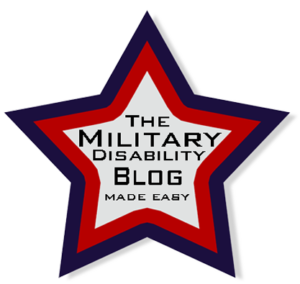The Promise to Address Comprehensive Toxics Act (PACT Act)—The Facts
- Published:
- Last Updated: October 3, 2022

Almost a year ago, the Honoring our Promise to Address Comprehensive Toxics Act of 2021 (known as “Honoring our PACT Act of 2021”) was first introduced to the House of Representatives. The House passed the PACT Act with a strong majority in March of this year, and the Act was read into the Senate at the end of May.
The purpose of the PACT Act is “to improve health care and benefits for veterans exposed to toxic substances, and for other purposes.” But what really does that mean? What are the “other purposes”? And what can we expect to see happen if the Senate passes the Act and the President signs it into law?
Well, the Honoring our PACT Act will make changes in 7 key areas. Below, I’ve discussed the facts of the 7 areas and provided my personal thoughts on each. The Senate can still propose amendments, so things may be adjusted between now and the final law.
Title I: Expansion of Health Care Eligibility.
This Title grants:
1. Eligibility for mammography screenings for veterans who served in locations where burn pits were used.
2. An extended deadline for health care enrollment from 5 to 10 years for combat veterans. This includes a 1-year open enrollment period for those who missed their 10-year window.
3. Eligibility for full medical care, including nursing home care, for any illness for toxic-exposed veterans. To qualify, the veterans must have been discharged between August 2, 1990 and December 31, 2018, and either
- served in Bahrain, Iraq, Kuwait, Oman, Qatar, Saudi Arabia, Somalia, or the United Arab Emirates on or after August 2, 1990
- served in Afghanistan, Djibouti, Egypt, Jordan, Lebanon, Syria, Yemen, Uzbekistan, or the Philippines on or after September 11, 2001
- deployed in support of a contingency operation (Operation Enduring Freedom, Operation Freedom’s Sentinel, Operation Iraqi Freedom, Operation New Dawn, Operation Inherent Resolve, and Resolute Support Mission); or
- participated in an activity that risked toxic exposure. The activity must have been officially recorded or be on a list that the VA is currently compiling.
Thoughts: This will give access to VA health care to many veterans who do not currently qualify, so great news all around. The only vague area that could be troublesome is the toxic exposure activity qualification. If a veteran has to have participated in an activity that was officially recorded or on a list, this could end up excluding many instances of exposure. Now, to give the VA and DoD credit, they are working to improve the exposure reporting system for current service members and to go back and record historic exposures of which they have evidence, but we already know that the DoD was notoriously awful at recording exposures, so the likelihood of them catching all instances is low. It’ll be interesting to see how comprehensive the list is that the VA is currently compiling. Regardless, this is great news for many veterans.
Title II: Toxic Exposure Presumption Process.
This Title makes multiple changes that are focused on improving the toxic exposure presumption process. It will:
1. Establish a Formal Advisory Committee on Toxic Exposure. This Committee will compile and review all available evidence regarding toxic exposures, including scientific research, known cases, news, veteran’s statistics, etc. Based on this review, the Committee will then:
- Identify new and emerging exposures
- Recommend formal studies of the health effects of certain exposures if it seems that these studies could change the current understanding of the health outcomes of such exposures
- Recommend ways to fix the exposure recording system
- Recommend which previous veterans’ cases of toxic exposure should be re-reviewed
- Recommend how the Presumptive List should be adjusted based on the evidence
2. Require the VA Secretary within 2 years to create a list that details likely exposures to substances, chemicals, and airborne hazards for veterans who served during specific times in various key locations. This list will be broader and more comprehensive than any current list.
3. Require the VA Secretary to conduct official research based on the Committee’s recommendations. Based on the results of such research, the Secretary will then update the Presumptive Lists accordingly. If this results in the removal of a current presumptive illness, the veterans already awarded for that illness will continue receiving those benefits.
4. Allow veterans whose toxic exposure claims have previously been denied to elect to re-open their claim. If awarded benefits under the new lists, they will be compensated back to the original effective date of their claim.
Thoughts: Yes, this is an essential step to getting toxic-exposed veterans their deserved benefits. There is currently little official research regarding the health effects of various toxic exposures, so by performing this research, creating new lists, and re-opening claims, the likelihood is that thousands of veterans will finally start receiving their benefits. Great news all around.
Title III: Improving the VA’s Service-Connection Process for Toxic Exposure.
This Title will:
1. Require the VA to conduct exams specifically meant to determine if there is a likelihood that a veteran’s condition was caused by toxic exposure when the veteran does not have sufficient evidence to prove toxic exposure.
2. Establish that veterans will be presumed to have been exposed to substances, chemicals, and airborne hazards (burn pits) if they:
- served in Bahrain, Iraq, Kuwait, Oman, Qatar, Saudi Arabia, Somalia, or the United Arab Emirates on or after August 2, 1990
- served in Afghanistan, Djibouti, Egypt, Jordan, Lebanon, Syria, Yemen, Uzbekistan, or the Philippines on or after September 11, 2001
Thoughts: Again, no complaints here. This will expand the number of veterans eligible for the Burn Pit Presumptive List, which is great. Requiring the VA to conduct exams for those veterans who do not have enough evidence is also a really good thing. Instead of just denying the claim, they must get a qualified medical opinion that could end up granting service-connection for the veteran if the physician feels that the condition is “at least as likely as not” caused by the exposure.
Title IV: Presumptions of Service-Connection.
This Title will make the following changes to the current Presumptive Lists:
1. For Radiation Exposure, veterans who participated in cleanup activities or nuclear responses in Palomares, Spain (between January 17, 1966 and March 31, 1967), Thule, Greenland (between January 21, 1968 and September 25, 1968), and Enewetak Atoll (between January 1, 1977 and December 31, 1980) will be added to the list.
2. For Agent Orange Exposure, veterans who served in Thailand on a US or Royal Thai base (between January 9, 1962 and June 30, 1976), Laos (between December 1, 1965 and September 30, 1969), Cambodia at Mimot or Krek (between April 16, 1969 and April 30, 1969), Johnston Atoll (between January 1, 1972 and September 30, 1977), or Guam or American Samoa (between January 9, 1962 and July 31, 1980) will be added to the list. The end date for service in Vietnam will also be extended to May 7, 1975. Finally, two conditions will be added to the Agent Orange List: hypertension and monoclonal gammopathy of undetermined significance.
3. For Persian Gulf veterans, veterans who served in Afghanistan, Israel, Egypt, Turkey, Syria, or Jordan will be added to the list. The conditions will also no longer be required to manifest to a certain severity within a certain time frame. It will be “to any degree at any time.” The VA will also be required to have their medical examiners use a new Gulf War Illness DBQ to ensure that the veteran is properly examined to consider the effects of service in the Persian Gulf.
4. For Burn Pit Exposure, 24 conditions will be added to the list, including asthma, chronic bronchitis, chronic obstructive pulmonary disease, constrictive or obliterative bronchiolitis, emphysema, granulomatous disease, interstitial lung disease, pleuritis, pulmonary fibrosis, sarcoidosis, chronic sinusitis, chronic rhinitis, glioblastoma, head cancer, neck cancer, respiratory cancer, gastrointestinal cancer, reproductive cancer, lymphoma cancer, lymphomatic cancer, kidney cancer, brain cancer, melanoma, and pancreatic cancer.
Thoughts: These changes will allow thousands of veterans to have their conditions service-connected, so this is great. With all the research the earlier Titles will require, these types of changes will become more frequent in the future.
Title V: Research Matters.
This Title will:
1. Implement measures to improve data collection between the VA and DoD by creating an interagency working group to facilitate collaboration in toxic exposure research.
2. Commission studies and various types of data collection to understand health trends of Post 9/11 veterans, health trends of toxic exposure, health effects of the Manhattan Project, health effects of jet fuels, incidents of cancer among the veteran population, and to determine whether it is feasible to provide healthcare to the dependents of veterans.
Thoughts: There definitely needs to be more research and data sharing. No question. The issue is that besides creating this work group, there are no other clear instructions on how to make this happen. The VA and the DoD have been trying to implement new strategies to share data for years now, but it clearly is still not enough since they need to create another work group. I’m a bit sceptical on how effective this will be, but hopeful that the work group will at least be able to come up with some successful data-sharing techniques. With modern tech, it really shouldn’t be as hard as the VA and DoD seem to have made it.
Title VI: Resources and Training for Toxic Exposure.
This Title will:
1. Require the VA to create a training program for all employees dealing with toxic exposure claims to ensure proper medical examinations and claims processing. This includes a toxic-exposure questionnaire for physicians.
2. Require the VA to provide resources to veterans who have or may have been exposed to toxics.
3. Require the DoD and VA to create guidelines to use in active duty training to educate service members of the risks and prevention of exposures.
Thoughts: Definitely necessary if these changes are going to be implemented seamlessly into the system. Employees need to know what’s up and veterans deserve to know what they are entitled to.
Title VII: Registries, Records, and Other Matters.
This Title will:
1. Create a registry for AFFF/PFAS exposure
2. Create a health registry for service at Fort McClellan
3. Update and fix errors in the Burn Pit Registry
4. Update and fix errors in exposure records
5. Allow Camp Lejeune toxic water veterans to file tort claims. Tort claims are filed against the Unites States for a negligent or wrongful act.
Thoughts: Any way that the VA can get organized and collect the data they need to properly compensate disabled veterans is a good thing.
That’s it. If passed into law, the PACT Act of 2021 will definitely make amazing improvements within the VA and DoD for toxic-exposed veterans, allowing many to finally receive the benefits they deserve.
As of June 8th, a few Senators proposed minor amendments so hopefully it’ll be passed quickly and head to the President’s desk.
Recent Posts
TDRL vs. PDRL—Which is better for disability benefits?
Leukemias and Multiple Myelomas NOW on the Presumptive List
Two MORE Conditions added to the Burn Pit Presumptive List
The 2025 VA Disability Rates are here!
About Us









